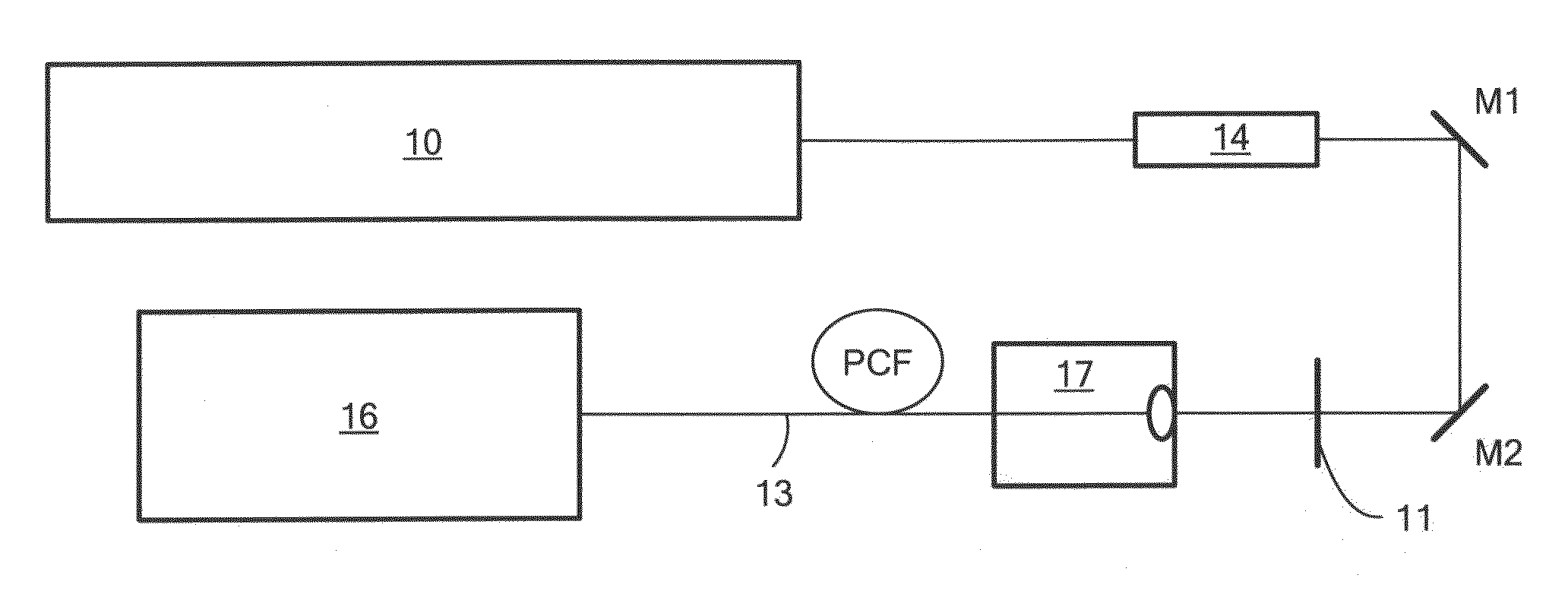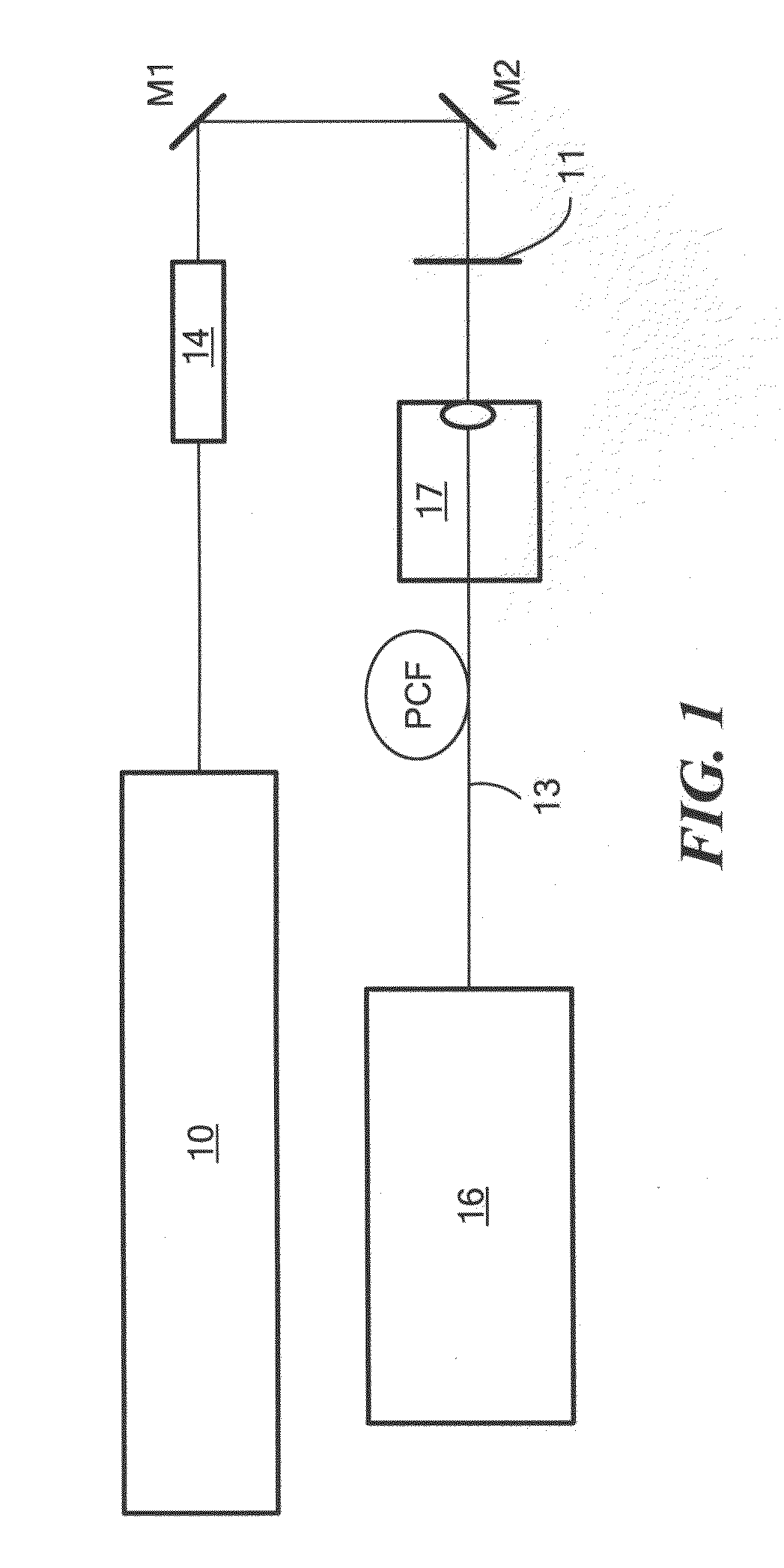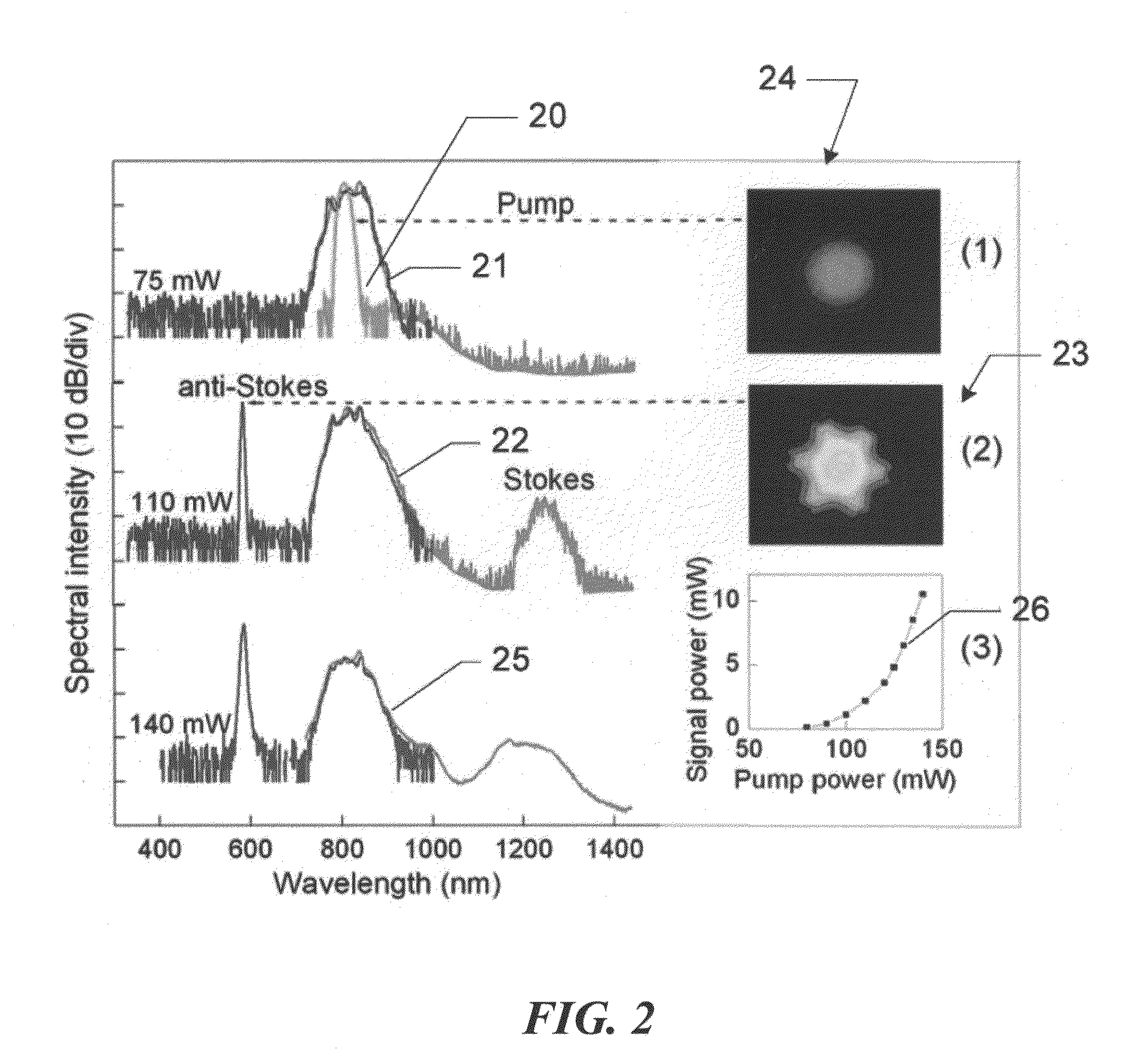Optical frequency up-conversion of femtosecond pulses into targeted single bands in the visible and ultraviolet
a technology of optical frequency up-conversion and femtosecond pulses, which is applied in the direction of optical waveguide light guides, optical elements, instruments, etc., can solve the problems of preventing the generation of multi-milliwatt-level signals, reducing conversion efficiency, and extending temporal width, so as to achieve the effect of reducing conversion efficiency
- Summary
- Abstract
- Description
- Claims
- Application Information
AI Technical Summary
Benefits of technology
Problems solved by technology
Method used
Image
Examples
Embodiment Construction
[0039]In accordance with preferred embodiments of the present invention, a supercontinuum-free widely-tunable multimilliwatt emission with a narrowband line profile is generated in a short nonlinear PCF by detuning the pump wavelength of a Ti:sapphire laser from the zero-dispersion wavelength (ZDW) of the PCF to a significant extent. Optical mechanisms employed for the selective up-conversion in the nonlinear medium include, but are not limited to, FWM and CR.
[0040]Basic components of a supercontinuum-free upconverter in accordance with embodiments of the present invention are now described with reference to FIG. 1. A pump source 10 provides pulses of electromagnetic radiation. In preferred embodiments, pump source 10 is a Ti:sapphire laser of widely-tunable wavelength, however the use of other pump sources is within the scope of the present invention. Input power P0, taken as the laser power between neutral density attenuator 11 and aspheric lens 12, is varied, by an attenuator, wi...
PUM
 Login to View More
Login to View More Abstract
Description
Claims
Application Information
 Login to View More
Login to View More - R&D
- Intellectual Property
- Life Sciences
- Materials
- Tech Scout
- Unparalleled Data Quality
- Higher Quality Content
- 60% Fewer Hallucinations
Browse by: Latest US Patents, China's latest patents, Technical Efficacy Thesaurus, Application Domain, Technology Topic, Popular Technical Reports.
© 2025 PatSnap. All rights reserved.Legal|Privacy policy|Modern Slavery Act Transparency Statement|Sitemap|About US| Contact US: help@patsnap.com



